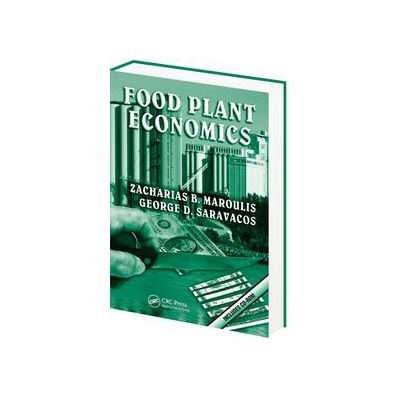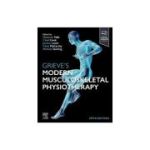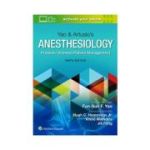Food Plant Economics

DESCRIERE
Features
# Provides an accompanying CD-ROM with prepared spreadsheet (Excel) applications
# Summarizes recent advances in food process and research technology, the structure of the food system in the US and EU, and the principles of modern design
# Applies the concepts of capital cost, operating cost, and cash flow to estimations of plant profitability
# Covers estimations of capital investment and operating costs including statistical data, empirical models, and useful rules of thumb
# Demonstrates the use of process engineering techniques to food preservation plants, manufacturing plants, and ingredients plants
# Contains a useful appendix with a glossary, tables, conversions, nomenclature, food properties, and heat transfer coefficients
Summary
Applying the proven success of modern process engineering economics to the food industry, Food Plant Economics considers the design and economic analysis of food preservation, food manufacturing, and food ingredients plants with regard to a number of representative food processes. Economic analysis of food plants requires the evaluation of quantitative data from the design and operation of food processes and processing plants. An accompanying CD-ROM includes prepared Excel spreadsheets for calculating various food plants scenarios by applying appropriate data regarding the cost of equipment and equipment sizing, material and energy balances, and plant operating costs.
Beginning with a thorough background in the economics of a food plant, the first three chapters summarize recent advances in food process and research technology, the structure of the food system in the US and EU, and the principles of modern design in food processes, processing equipment, and processing plants. The second three chapters discuss process economics in relation to the food industry by applying the concepts of capital cost, operating cost, and cash flow to estimations of plant profitability. Detailed chapters cover estimations of capital investment and operating costs including statistical data, empirical models, and useful rules of thumb. The remaining three chapters apply the techniques of the previous discussions to food preservation plants such as concentration, canning, and dehydration; manufacturing plants including wine, bread, and yogurt; as well as ingredients plants that produce sugars and oils. A useful appendix contains a glossary, tables, conversions, nomenclature, food properties, and heat transfer coefficients.
A practical and comprehensive treatment of process economics, Food Plant Economics provides a complete introduction to the application of this efficient technique to the food industry.
INTRODUCTION
Food System
Food Process Technology
Food Plant Economics
Economic Analysis of Food Processing Plants
Food Research and Development
STRUCTURE OF THE FOOD INDUSTRY
Food Systems
OVERVIEW OF FOOD PROCESS AND PLANT DESIGN
Food Process Design
Food Plant Design
Food Plant Utilities
Food Plant Economics
PROCESS ENGINEERING ECONOMICS
Money Flow in a Business Enterprise
Capital Cost
Manufacturing Cost
Cash Flow Analysis
Plant Profitability
Sensitivity Analysis
CAPITAL COST OF FOOD PLANTS
Quotations from Fabricators
Equipment Cost Estimation
Data for Preliminary Equipment Cost Estimation
Short-Cut Equipment Sizing
OPERATING COST OF FOOD PLANTS
Raw Materials
Food Product Cost Data
Packaging Materials
Utilities
Utility Cost Estimating Model
Labor
Labor Cost Estimation Model
FOOD PRESERVATION PLANTS
Tomato Paste Plant
Orange Juice Concentration Plant
UHT Sterilized Milk Plant
Fruit Canning Plant
Vegetable Freezing Plant
Vegetable Dehydration Plant
Techno-Economic Comparison
Suppliers of Major Food Processing Equipment
FOOD MANUFACTURING PLANTS
Bread Manufacturing Plant
Yogurt Manufacturing Plant
Wine Processing Plant
Economic Comparison
FOOD INGREDIENTS PLANTS
Beet Sugar Plant
Overview of Process Plant Optimization
APPENDIX
Glossary of Economic Terms
Notation and Conversion to SI Units
Useful Thermophysical Properties of Water
Thermophysical Properties of Some Food Materials
Rheological Properties
Overall Heat Transfer Coefficients
Accompanying CD
INDEX
# Provides an accompanying CD-ROM with prepared spreadsheet (Excel) applications
# Summarizes recent advances in food process and research technology, the structure of the food system in the US and EU, and the principles of modern design
# Applies the concepts of capital cost, operating cost, and cash flow to estimations of plant profitability
# Covers estimations of capital investment and operating costs including statistical data, empirical models, and useful rules of thumb
# Demonstrates the use of process engineering techniques to food preservation plants, manufacturing plants, and ingredients plants
# Contains a useful appendix with a glossary, tables, conversions, nomenclature, food properties, and heat transfer coefficients
Summary
Applying the proven success of modern process engineering economics to the food industry, Food Plant Economics considers the design and economic analysis of food preservation, food manufacturing, and food ingredients plants with regard to a number of representative food processes. Economic analysis of food plants requires the evaluation of quantitative data from the design and operation of food processes and processing plants. An accompanying CD-ROM includes prepared Excel spreadsheets for calculating various food plants scenarios by applying appropriate data regarding the cost of equipment and equipment sizing, material and energy balances, and plant operating costs.
Beginning with a thorough background in the economics of a food plant, the first three chapters summarize recent advances in food process and research technology, the structure of the food system in the US and EU, and the principles of modern design in food processes, processing equipment, and processing plants. The second three chapters discuss process economics in relation to the food industry by applying the concepts of capital cost, operating cost, and cash flow to estimations of plant profitability. Detailed chapters cover estimations of capital investment and operating costs including statistical data, empirical models, and useful rules of thumb. The remaining three chapters apply the techniques of the previous discussions to food preservation plants such as concentration, canning, and dehydration; manufacturing plants including wine, bread, and yogurt; as well as ingredients plants that produce sugars and oils. A useful appendix contains a glossary, tables, conversions, nomenclature, food properties, and heat transfer coefficients.
A practical and comprehensive treatment of process economics, Food Plant Economics provides a complete introduction to the application of this efficient technique to the food industry.
INTRODUCTION
Food System
Food Process Technology
Food Plant Economics
Economic Analysis of Food Processing Plants
Food Research and Development
STRUCTURE OF THE FOOD INDUSTRY
Food Systems
OVERVIEW OF FOOD PROCESS AND PLANT DESIGN
Food Process Design
Food Plant Design
Food Plant Utilities
Food Plant Economics
PROCESS ENGINEERING ECONOMICS
Money Flow in a Business Enterprise
Capital Cost
Manufacturing Cost
Cash Flow Analysis
Plant Profitability
Sensitivity Analysis
CAPITAL COST OF FOOD PLANTS
Quotations from Fabricators
Equipment Cost Estimation
Data for Preliminary Equipment Cost Estimation
Short-Cut Equipment Sizing
OPERATING COST OF FOOD PLANTS
Raw Materials
Food Product Cost Data
Packaging Materials
Utilities
Utility Cost Estimating Model
Labor
Labor Cost Estimation Model
FOOD PRESERVATION PLANTS
Tomato Paste Plant
Orange Juice Concentration Plant
UHT Sterilized Milk Plant
Fruit Canning Plant
Vegetable Freezing Plant
Vegetable Dehydration Plant
Techno-Economic Comparison
Suppliers of Major Food Processing Equipment
FOOD MANUFACTURING PLANTS
Bread Manufacturing Plant
Yogurt Manufacturing Plant
Wine Processing Plant
Economic Comparison
FOOD INGREDIENTS PLANTS
Beet Sugar Plant
Overview of Process Plant Optimization
APPENDIX
Glossary of Economic Terms
Notation and Conversion to SI Units
Useful Thermophysical Properties of Water
Thermophysical Properties of Some Food Materials
Rheological Properties
Overall Heat Transfer Coefficients
Accompanying CD
INDEX
Categorii de carte
-Comandă specială
-Edituri
-Promo
-Publicaţii Callisto
-Cărţi noi
-- 670,95 leiPRP: 745,50 lei
- 226,80 leiPRP: 252,00 lei
- 463,05 leiPRP: 514,50 lei
Promoţii
-- 428,40 leiPRP: 714,00 lei
- 670,95 leiPRP: 745,50 lei
- 226,80 leiPRP: 252,00 lei











REVIEW-URI